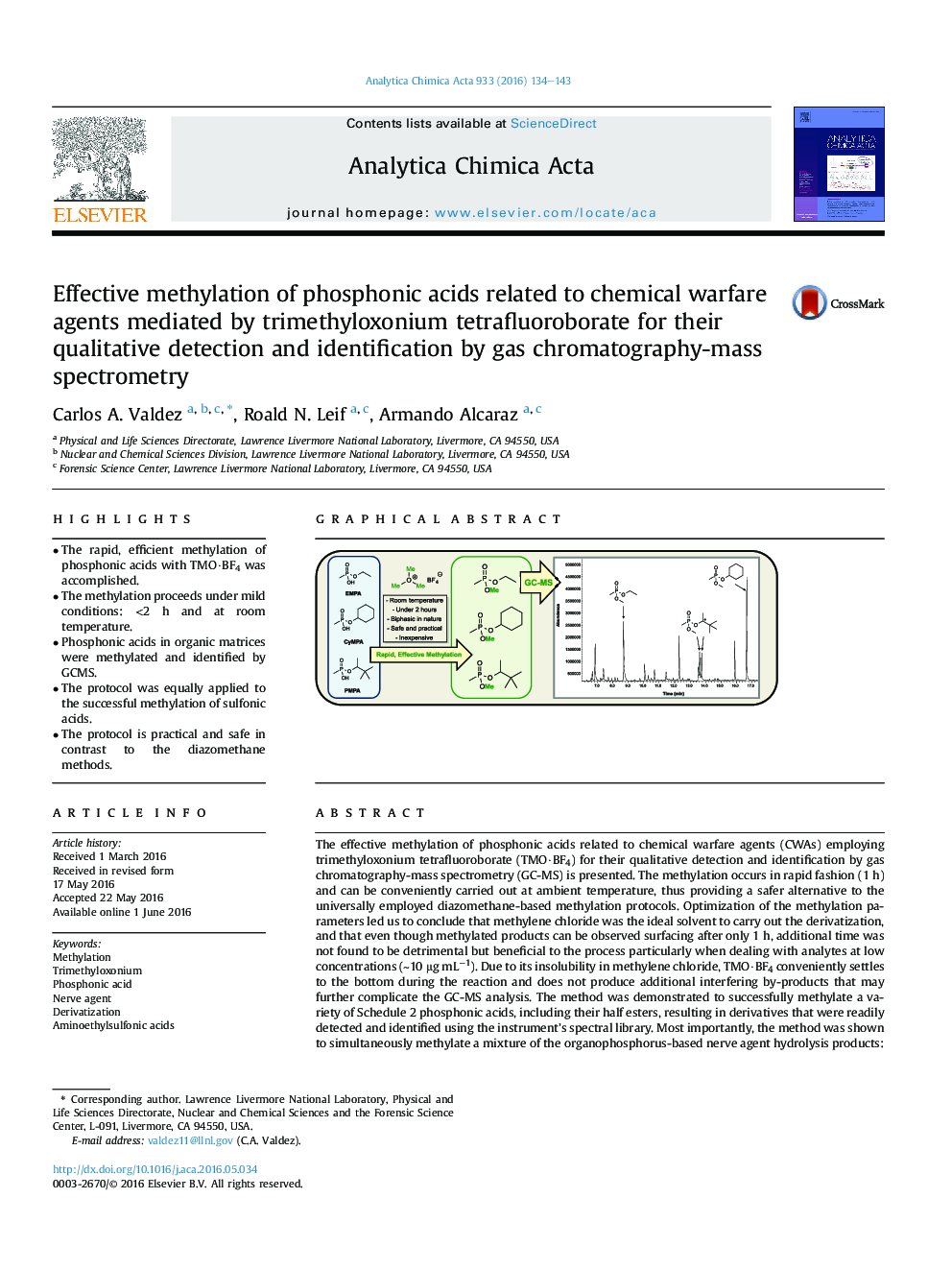| کد مقاله | کد نشریه | سال انتشار | مقاله انگلیسی | نسخه تمام متن |
|---|---|---|---|---|
| 1162849 | 1490899 | 2016 | 10 صفحه PDF | دانلود رایگان |

• The rapid, efficient methylation of phosphonic acids with TMO·BF4 was accomplished.
• The methylation proceeds under mild conditions: <2 h and at room temperature.
• Phosphonic acids in organic matrices were methylated and identified by GCMS.
• The protocol was equally applied to the successful methylation of sulfonic acids.
• The protocol is practical and safe in contrast to the diazomethane methods.
The effective methylation of phosphonic acids related to chemical warfare agents (CWAs) employing trimethyloxonium tetrafluoroborate (TMO·BF4) for their qualitative detection and identification by gas chromatography-mass spectrometry (GC-MS) is presented. The methylation occurs in rapid fashion (1 h) and can be conveniently carried out at ambient temperature, thus providing a safer alternative to the universally employed diazomethane-based methylation protocols. Optimization of the methylation parameters led us to conclude that methylene chloride was the ideal solvent to carry out the derivatization, and that even though methylated products can be observed surfacing after only 1 h, additional time was not found to be detrimental but beneficial to the process particularly when dealing with analytes at low concentrations (∼10 μg mL−1). Due to its insolubility in methylene chloride, TMO·BF4 conveniently settles to the bottom during the reaction and does not produce additional interfering by-products that may further complicate the GC-MS analysis. The method was demonstrated to successfully methylate a variety of Schedule 2 phosphonic acids, including their half esters, resulting in derivatives that were readily detected and identified using the instrument's spectral library. Most importantly, the method was shown to simultaneously methylate a mixture of the organophosphorus-based nerve agent hydrolysis products: pinacolyl methylphosphonate (PMPA), cyclohexyl methylphosphonate (CyMPA) and ethyl methylphosphonate (EMPA) (at a 10 μg mL−1 concentration each) in a fatty acid ester-rich organic matrix (OPCW-PT-O3) featured in the 38th Organisation for the Prohibition of Chemical Weapons (OPCW) Proficiency Test. In addition, the protocol was found to effectively methylate N,N-diethylamino ethanesulfonic acid and N,N-diisopropylamino ethanesulfonic acid that are products arising from the oxidative degradation of the V-series agents VR and VX respectively. The work described herein represents the first report on the use of TMO·BF4 as a viable, stable and safe agent for the methylation of phosphonic acids and their half esters and within the context of an OPCW Proficiency Test sample analysis.
Figure optionsDownload as PowerPoint slide
Journal: Analytica Chimica Acta - Volume 933, 24 August 2016, Pages 134–143